
Phryganidia californica, the California oakworm or California oak moth, is a moth of the family Notodontidae. The species was first described by Alpheus Spring Packard in 1864. It is found along the coasts of the US states of California and Oregon.
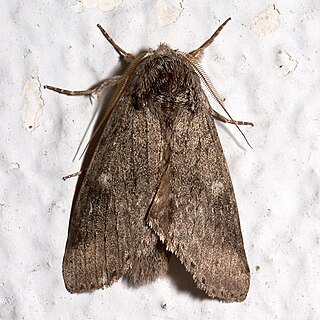
Lochmaeus manteo, the variable oakleaf caterpillar moth, is a moth of the family Notodontidae. It is found in eastern North America.

Heterocampa is a genus of prominent moths in the family Notodontidae. There are about 18 described species in Heterocampa, found in North, Central, and South America.
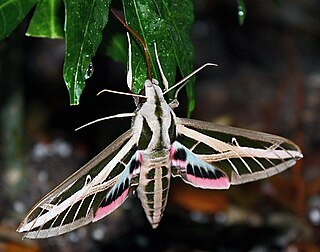
Eumorpha fasciatus, the banded sphinx, is a moth of the family Sphingidae. The species was first described by Johann Heinrich Sulzer in 1776.

Pantographa limata, the basswood leafroller moth, is a moth of the family Crambidae. It is found in North America, including Arkansas, Florida, Georgia, Illinois, Massachusetts, New Hampshire, New York, North Carolina, Ohio, Pennsylvania, Tennessee, Virginia, West Virginia, Wisconsin and Quebec.
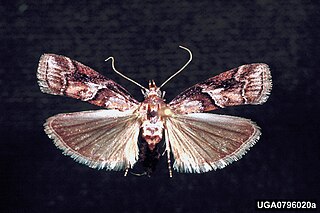
Dioryctria clarioralis, the blister coneworm moth, is a moth of the family Pyralidae. It is found in the eastern United States, including Florida, New Jersey and Virginia.

Cochylichroa hospes, the banded sunflower moth, is a moth of the family Tortricidae. It is found from North Carolina to Colorado, Utah, New Mexico and northern Arizona.
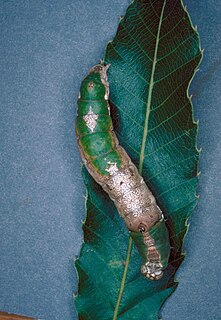
Oligocentria lignicolor, the white-streaked prominent moth or lacecapped caterpillar, is a moth of the family Notodontidae. It is found in North America, including Connecticut, Georgia, Illinois, Louisiana, Massachusetts, Mississippi, Missouri, New Brunswick, New Jersey, New York, North Carolina, Oklahoma and Pennsylvania.
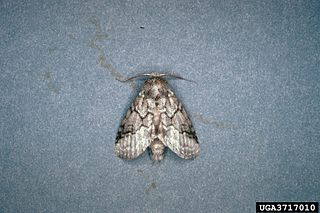
Lochmaeus bilineata, the double-lined prominent moth, is a moth of the family Notodontidae. It is found in the eastern two-thirds of the United States and southern Canada, west to New Mexico in the south and Saskatchewan in the north.

Nerice bidentata, the base-streaked prominent moth or double-toothed prominent moth, is a moth of the family Notodontidae. It is found in from Nova Scotia to Florida, west to Texas and north to Saskatchewan.
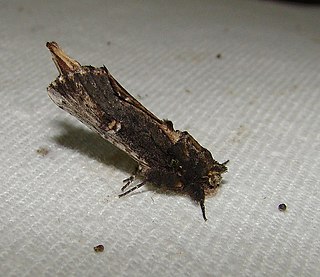
Schizura ipomoeae, the morning-glory prominent moth or false unicorn caterpillar, is a moth of the family Notodontidae. The species was first described by Edward Doubleday in 1841. It is found in the United States and southern Canada.
Clostera inclusa, the angle-lined prominent moth, many-lined prominent or poplar tentmaker, is a moth of the family Notodontidae. The species was first described by Jacob Hübner in 1831. It is found in North America, including Arkansas, Colorado, Florida, Georgia, Illinois, New Hampshire, New York, North Carolina, Oklahoma, Ontario, Oregon, Pennsylvania, South Carolina and Virginia.
Symmerista canicosta, the red-humped oakworm moth, is a species of moth of the family Notodontidae. It is found from southern Canada to North Carolina, South Carolina and Mississippi.

Synchlora aerata, the wavy-lined emerald moth or camouflaged looper, is a species of moth of the family Geometridae. The species was described by Johan Christian Fabricius in 1798. It is found in most of North America.
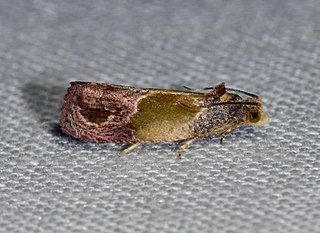
Eumarozia malachitana, the sculptured moth, is a species of moth of the family Tortricidae. It is found in eastern North America, where it has been recorded from Alabama, Arkansas, California, Florida, Georgia, Illinois, Indiana, Iowa, Kentucky, Louisiana, Maine, Maryland, Massachusetts, Minnesota, Mississippi, Missouri, New Jersey, North Carolina, Ohio, Oklahoma, Ontario, Pennsylvania, South Carolina, Tennessee, Texas, Virginia and West Virginia.
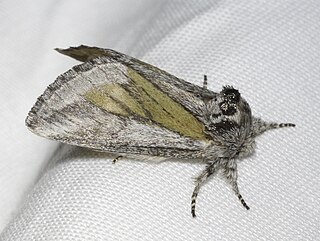
Astiptodonta wymola is a species of prominent moth in the family Notodontidae. It was first described by William Barnes in 1905 and it is found in North America.
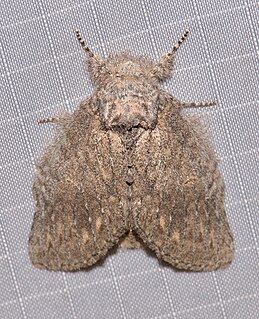
Cecrita lunata is a species of moth in the family Notodontidae. It was first described by Henry Edwards in 1884 and it is found in the western United States and Mexico.
Astiptodonta aonides is a species of prominent moth in the family Notodontidae. It was first described by Strecker in 1899 and is found in North America.
Cecrita belfragei is a species of moth in the family Notodontidae. It was first described by Augustus Radcliffe Grote in 1879 and it is found in North America.

Cecrita is a genus of prominent moths in the family Notodontidae. There are about eight described species in Cecrita, found in North, Central, and South America.


















